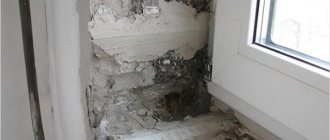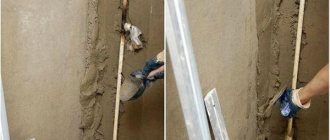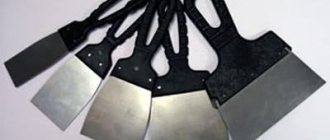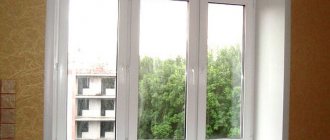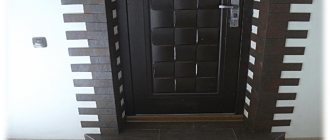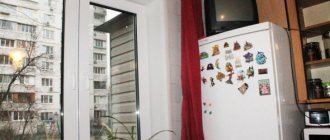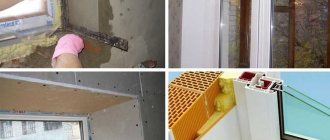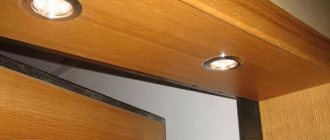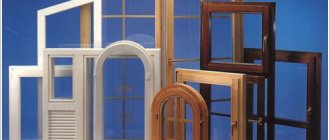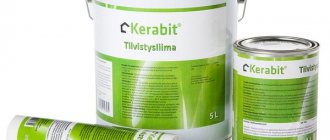Effective thermal insulation of a room implies insulation of all parts of the building. Particular attention is paid to those points where there is a risk of the formation of cold bridges. Therefore, an obligatory step is the insulation of window slopes from the outside using different materials and technologies.
Insulating the slopes protects the window opening from freezing and condensation.
Features of insulation of window slopes
Thermal insulation of external window slopes affects the comfort of living in the house, because... maintains an optimal and correct microclimate throughout the year. The procedure does not require the involvement of specialists or professional equipment. You can implement it yourself using available tools.
Since there are seams between the window frame and the wall, they are usually filled with foam to prevent drafts. This substance has good thermal insulation parameters, but can be destroyed by moisture. Boxes that do not have additional lining are not sufficiently protected from negative factors. If there is no insulation, the joints will be exposed to water, so over time the fasteners will begin to wear out and the window will sag.
After the structure shrinks, voids appear between the opening and the frame, which provokes freezing and the formation of cold bridges.
Insulated windows do not accumulate condensation inside the building, and therefore prevent the appearance of mold in residential areas.
We insulate the inside
Having decided how to insulate the slopes, we move on to practice. Sometimes it happens that when a plastic window is installed, despite good treatment with foam, the glass gets wet and there is a strong blow from the slopes. This is often the result of careless installation, as a result of which the structure will have to be put in order yourself.
(function(w, d, n, s, t) { w[n] = w[n] || []; w[n].push(function() { Ya.Context.AdvManager.render({ blockId: “RA-510923-1”, renderTo: “yandex_rtb_R-A-510923-1”, async: true }); }); t = d.getElementsByTagName(“script”)[0]; s = d.createElement(“ script"); s.type = "text/javascript"; s.src = "//an.yandex.ru/system/context.js"; s.async = true; t.parentNode.insertBefore(s, t) ; })(this, this.document, “yandexContextAsyncCallbacks”);
Primary tasks:
- Remove any remaining foam.
- Treat the surface with a primer with an antibacterial effect to prevent the appearance of mold in the future.
- We plaster the window area, achieving a flat surface onto which foam plastic can then be easily glued.
- We thoroughly clean the plastered areas, apply primer and begin laying insulation.
- In the case of polystyrene foam, the surface must be scratched with an emery sheet to reduce the smoothness. After which the material can be safely glued to the slopes. When cutting out the required pieces of foam, measure out slightly larger sizes, which can always be trimmed instead of gluing the missing pieces.
Before gluing the foam, it is recommended to scratch its surface - Let the structure dry and putty the corner.
- After laying the foam, we proceed to the finishing coating, chosen to our own taste. This can be plasterboard covering or decorative plastering.
Having figured out in practice how to insulate the slopes of plastic windows inside, we move on to external work.
Reasons for passing cold air
The key places where heat escapes and cold air enters are:
- Double-glazed window fasteners.
- Sealing rubber around the perimeter of the window.
- Elements under fittings, etc.
There are several reasons explaining the intense heat loss. Most often, the problem occurs due to non-compliance with the rules for installing double-glazed windows and deviations from technology.
Negligent actions of the installation team, poor quality treatment of voids and lack of tightness of joints provoke the appearance of cold bridges. If you do not properly line the slopes, then over time environmental factors will provoke the destruction of the insulating layer in the form of construction foam.
Often, cold bridges appear due to the natural shrinkage of a new building or wooden structure, which causes the window frame to warp.
Associated reasons include improper care of the structure, for example, lack of regular washing.
Experts note that to maintain the functionality of the system, it is necessary to wash the window seal 1-2 times a year and treat it with glycerin. This will prevent it from cracking during operation.
Cold air enters the building when the pressure flaps are loosened. The problem is resolved by adjusting the fittings.
How to make an external slope - the wisdom of plastering
Windows facing a loggia or balcony can be protected with the same plastic panels that are installed from the inside. Accurate, fast and efficient. In addition, plastic products are ideally suited for plastic windows - they will look quite harmonious. The same cannot be said about wooden windows. The process becomes somewhat more complicated if you decorate the walls of your house with siding (block house, lining, metal or plastic siding).
In this case, you should select platbands directly for the finishing material - this should be done when choosing it, since suitable additional elements are often sold as a set. Plastering street slopes is the most time-consuming method. Although there are benefits from its use - consumables are inexpensive, and the result is quite durable. In addition, plaster provides additional thermal insulation.
Adjusting the clamping mechanism
During the operation of a building, windows and doors are exposed to climatic and mechanical influences. This provokes a loss of seal volume and cold penetration into the room. To fix the problem, you need to adjust the clamping element without replacing the sealing gasket.
Scheme for adjusting the pressure of a plastic window.
To do this, find a special protruding cylinder at the point where the mechanical plug is placed. Next you need to move the hooks to the optimal level or adjust the trunnions. To adjust the position of the hooks, the bolts are unscrewed. If you move them towards the street, the pressure will be increased, and if you move them back, it will be decreased.
Installation of external slopes - the fastest and most popular finishing methods
The easiest way to finish external window slopes is putty and painting. Some people get by with just painting, but this is wrong. A layer of paint should protect the foam and windows from atmospheric influences, but we must not forget that the paint itself is susceptible to them, so it must be renewed at least every 2-3 years. The quickest way to make external slopes with your own hands is by gluing plastic corners. They are attached to the corners with butyl sealant, and to the window with double-sided tape. Nevertheless, the plastic copes with its task - it covers the seals from direct sunlight, rain and wind.
For this purpose, galvanized metal is used, which has a special polyester coating. After measuring the window opening and the slopes themselves, a piece of metal of the required size is bent into a shape resembling the letter “Z”. The curved edges are attached to the window frame with self-tapping screws, and the seams are treated with silicone-based sealant. The color should be selected in combination with the color of the roof, windows or facade so that it is in harmony with the overall picture. For example, if the windows are wooden, then for finishing the slopes it is better to choose a color identical to the shade of the wood.
How to determine where a draft is coming from a window
Even if there is one defect in the window structure, this will lead to drafts. To find out which direction it is blowing from, you can use the following methods:
- Run your hand around the perimeter of the window and check where there is a draft.
- Using a lighter, evaluate where the intensity of the flame changes.
You can also place a sheet of paper in an open window and then close the sash. Next, you should pull the tip of the sheet: if it comes out easily, the seal is not pressed well enough.
Preparation
Determination of critical points
Advice
Before you start insulating the slopes of plastic windows, you need to find out in which part of the window the air flows the most. This is necessary in order to properly patch up the damaged area and save yourself from cold winters forever.
Checking is quite easy:
- Run the damp edge of your palm along the perimeter of all window sashes. Where a sharp temperature change is felt, the window is not airtight.
- Try to determine where the cold air is coming from: from under the sash or from the space between the frame and the slope.
- If there is a draft from the frame, place a sheet of paper in the open sash and try to pull it out after closing.
If you manage to pull out the sheet while the sashes are closed, it means that the window does not close tightly in this place and needs to be adjusted or replaced with a worn out seal. If the cold comes from the space between the frame and the slope, additional insulation is necessary.
Tools
- Sandpaper.
- Stationery knife.
- Construction mixer.
- Brush.
- Spatula for applying plaster.
- Half-grater.
- A couple of dry containers.
Thermal insulation materials
Various materials are used as insulation for thermal insulation of slopes. They differ in cost, characteristics and installation technology.
Expanded polystyrene
It is considered an effective insulator among all slab modifications. The material does not deteriorate in an environment with high humidity, and is not afraid of the effects of pathogenic organisms and mechanical loads. It can be used both for external and internal work.
Expanded polystyrene is an inexpensive and easy-to-use material for insulating slopes.
The structure of polystyrene foam contains many air bubbles. They form solid foam and retain heat efficiently. Extruded grades have zero vapor permeability. For foam modifications this figure is 0.019-0.015.
Styrofoam
It is produced in the form of slabs measuring 100x100x2 cm. It is characterized by low price and ease of installation. The negative aspects are associated with the rapid absorption of moisture with the subsequent loss of initial properties. During operation, the foam takes on the appearance of dust.
Polyurethane foam
Using polyurethane foam, you can close all the voids in the window sill space. The substance is a compound of polyol and isocyanate with the inclusion of a number of additives. Foam series with varying degrees of rigidity and expansion are offered for sale. When all components are combined, the mixture is transferred to an aerosol can and used for its intended purpose. Under the influence of the propellant, the mass comes out, reacting with the liquid that is on the structure being treated and in the environment. The material is distributed in several layers until the insulation thickness reaches 3 cm.
Sandwich panels
Suitable for interior and exterior finishing of slopes. Using the panels, you can protect the polyurethane foam, which is located between the PVC plates, from the negative influence of the environment and the appearance of cold bridges. When laying the material, it is necessary to seal the ends to securely close the filler.
Sandwich panels are used for both external and external types of insulation.
Plaster
Combines the properties of putty and foam. Since the substance is in a liquid state, it fills voids efficiently, forming a durable window frame. After drying, the mixture creates a high-quality temperature barrier between the building and the street. The insulating parameters of the solution are increased as a result of the inclusion of polystyrene foam balls and various additives in the initial raw material.
Basalt wool
Sold in slab and roll versions with a thickness of 50, 100 and 150 mm. The insulator is distinguished by its effective air permeability and is suitable for insulating frame or wooden structures where it is important to maintain good ventilation.
Since the material is hygroscopic, it should be covered with membrane fabric, followed by the installation of plastic panels or a layer of plaster.
Other
As an affordable alternative to polystyrene foam, penoplex is used, which is suitable for treating slopes inside and outside the building. Insulation is also carried out by plastering surfaces with further lining with a decorative composition. Fiberglass is a good insulator. It is characterized by high-quality heat conservation and protection against moisture penetration.
Fiberglass fabric with a foil base does not allow moisture and does not let air in from the street.
Which material should you prefer?
Foam plastic should be chosen by those who do not want to spend a lot of money on insulation and want to do everything themselves, since this material is the easiest to handle without any special skills.
If you can allocate more money for slope insulation, choose foamed polyester. In addition to thermal insulation, you will also receive moisture-resistant material with good sound insulation. True, this material has one drawback. Using it, you will have to take care of sealing the joints in the slopes, which will complicate the process a little.
Mineral wool is not inferior in quality to the previous material, but it has a significant disadvantage. Tiny pieces of cotton wool can become airborne when you use it, like dust. This may harm the person working with the material. Therefore, you should only purchase high quality mineral wool . And don’t forget to follow safety precautions and use a respirator while working.
The effectiveness of sandwich panels can be compared with the two previous options, and the ease of installation is similar to foam plastic. The main disadvantage of such panels is their high price compared to all other insulation materials.
Preparatory work
Before the main stage of slope insulation, several preparatory measures must be completed. First, you should seal the seams, especially the external ones, to avoid blowing through the windows. It is important to ensure that the voids are well sealed with the foam used during installation of the structure.
Visual inspection of the window system is a mandatory stage of preparation, regardless of the method and material of thermal insulation. If the installation of a double-glazed window was carried out a long time ago, and the installation seam is not processed, the foam layer may collapse and crumble. Defective areas are determined by using a lighter, which is passed around the perimeter of the window. When identifying cold bridges, you need to clean such sectors and re-treat them with the composition. Excess foam should be cut off.
How do you do the work yourself?
Prepare all the necessary tools, as well as assembly adhesive, primer and plaster. In this example, we chose the simplest option as the insulation material - polystyrene foam.
Follow these instructions:
- Cut off the protruding rags of polyurethane foam.
- Carefully treat all surfaces of the slope with primer. Use a composition with special antiseptic additives to avoid the appearance of fungus in the future.
- Mix the plaster mortar in a clean bucket using a construction mixer. The proportions of water and plaster mixture must be indicated on the packaging. There should be no lumps left in the finished composition.
- Start plastering by applying the solution to the slope with a special spatula, and then level it with a trowel (how to seal seams and cracks when installing slopes with plaster and other methods is described in detail here).
ImportantIt is not necessary to carefully maintain the evenness of the surface. The main thing is that you can then easily glue the foam.
- After the surface has dried, go over it again with primer. This way the foam will stick better and you will need less glue.
- Before gluing the foam, cut out pieces of the desired shape from it, and sand them on both sides. After this, the material will lose its smoothness and stick better to the slope.
- Apply glue to each piece of foam and press them tightly to the window opening.
- After the glue has dried, the surface of the foam must be treated with plaster.
- When the surface is dry, prime the slopes.
At this point the insulation process can be considered complete. Now all you have to do is choose the paint and improve the look of the window.
Read more about how to make and install warm window slopes in a separate publication.
Required Tools
The work is performed using the following tools:
- Level.
- Hammer.
- Miter box.
- Marker.
- Stationery knife.
- Personal protective equipment.
- Set of brushes and spatulas.
- Hacksaws.
- Roulettes.
Necessary tools for insulating window slopes.
The list of required materials includes an adhesive mixture on a synthetic or organic basis, putty solution, facade plaster, deep penetration primer, antiseptic, and heat insulator.
Taking into account the specifics of thermal insulation, the set can expand and vary.
How to insulate the slopes of plastic windows from the outside
To ensure high-quality protection of your home from heat loss, you should insulate the slopes in a timely manner. Penoplex is suitable for such work. In addition, you will need to purchase a sealant.
Next you should follow the following algorithm of actions:
- The surface is cleaned of dirt, dust, old paint and building material residues and leveled with a cement mixture.
- After the preparatory layer has dried, the insulator is cut into the required lengths.
- The sheets are coated with glue and placed on the slopes. To strengthen the installation, dowels are used, which are installed at different points. The adhesive layer should be 1-3 mm thick.
- At the next stage, the corners are installed. They are necessary to obtain smooth and high-quality insulated slopes.
- The outer part of the insulator is treated with special glue and reinforced with reinforcing mesh.
- The layer is leveled with putty.
- Finally, water-based paint or other facing materials are distributed.
Make the right choice
Slopes are an additional source through which heat flows out of the room. Also, due to the formation of condensation on them, the room may smell damp or moldy. This issue needs to be resolved immediately, but less effort will have to be made at the initial stage of window installation.
Layer-by-layer arrangement of materials
In this case, modern insulating materials are used:
- polyurethane foam;
- mineral or basalt wool;
- foam boards;
- rolls of foil fiberglass;
- sandwich panels.
It is also possible to insulate the slopes of plastic windows with isover (fiberglass). Preference is given to any method, based on technological capabilities and while maintaining an aesthetic appearance.
Izover for slope insulation
When using polyurethane foam, you will need to protect it from exposure to ultraviolet rays and moisture. Otherwise, it will collapse and turn into dust.
Treatment of joints with polyurethane foam
If you insulate the slopes of plastic windows with your own hands using polystyrene foam, you need to know that this porous material is capable of accumulating moisture, which in such a situation would be undesirable. It is preferable to choose penoplex slabs, which show increased efficiency, but have a higher cost.
Another high-quality material for such work is fiberglass. It blocks the circulation of air, moisture and is even a dielectric. However, working with her in such conditions is problematic.
It is worth considering that the result will be better if the work is carried out with slopes both on the inside, indoors, and on external surfaces located outside.
Options for slopes of PVC plastic windows
In severe frosts, without reliable insulation of the slopes of plastic windows from the inside and outside, you can even get drizzle on the walls. Therefore, such an operation should not be neglected.
Working indoors
After installing a new plastic window, the owners immediately take care of ensuring the aesthetic appearance of the part of the room being repaired. It is recommended at this stage, before finishing, to insulate problem areas using one of the types of thermal liners. They are mounted on the internal or external surface, and then plastering and cladding are carried out.
The overall parameters of thermal liners depend on climatic conditions, as well as the thermal conductivity of the building wall. The effectiveness of insulating the slopes of plastic windows with your own hands, as in the video, depends on the degree of adhesion of the thermal insulator to the wall surface. There should be no swelling or air layer allowed in this gap.
Method for sealing cracks from the inside
You can use one of the options that are doable even if you work on your own.
- After installing the window, insulation is attached to the resulting planes of the window opening, which, after fixing, must cover the seam between the frame and the wall. This creates a slight overlap on the front of the frame. If soft insulation, such as basalt wool, is used, then the surface is covered with a layer of plasterboard, then the outer part must be puttied and painted. When extruded polystyrene foam boards are used, plasterboard sheets are not installed. The horizontal part of the slopes is also insulated. After installing the slabs, a plaster mesh must be applied to the front side. Prepared cement mortar is applied on top of it. The final layer is finishing putty.
- It will be possible to achieve high-quality insulation of the slopes of plastic windows as in the video by installing sandwich panels. This material includes a thermal insulation layer. This type of work is usually called “clean”. This insulation is perfect for plastic windows in terms of its style, because similar decorative surfaces and frames are appropriately in harmony with each other. To create better contact, you can place an additional layer of mineral wool between the panel and the slope.
Common Mistakes
The key mistake when insulating slopes is to use exclusively polyurethane foam. During the expansion process, the material has a deforming effect on window systems, breaking their tightness.
Often, inexperienced installers violate the ventilation regime by not maintaining the gap between the components of the structure.
A common mistake is using low-quality insulation, which not only does not improve thermal protection, but also harms the microclimate in the room.
Necessary components and additional elements
For the external decoration of windows and window openings, in addition to the cladding material itself, various additional elements and components for plastic windows are used. Let's consider, using sandwich panels as an example, what may be required during the work process.
For outdoor work, it is most preferable to use white sandwich panels based on polystyrene foam or polystyrene foam
Other options for dealing with drafts
If it is not possible to carry out insulation work, and you need to get rid of drafts in a short time, you can consider alternative ways to solve the problem:
- Glue a sealing layer around the perimeter of the window. This is done before winter, when frequent opening of windows is not planned.
- Secure mounting tape at the joints and crevices of the structure. The method was used back in the USSR.
- Install heat-saving film on the glass unit.
- Fill the cracks and joints with available materials (wet paper, pieces of fabric, cotton wool, etc.).
- Hang thick curtains to reduce heat leakage to the outside.
Why do slopes flow?
The most common cause of condensation is improper installation of new PVC windows. For example, the old window block consisted of two frames, and its depth was at least 12 cm. And the new plastic window block, at best, reaches 8 cm. And wood is far from plastic.
When the installers arrive, naturally, no one thinks about the freezing point of the wall, and they install the windows as deep as possible. Everything seems to be fine, even the window sill has become deeper.
Then the finisher comes, covers it all with plasterboard, and in general everything became beautiful. But winter comes, and completely “unexpectedly” condensation appears on the slopes.
Expert advice
For high-quality insulation of slopes, take into account the recommendations of experts:
- If it is not possible to buy polystyrene foam, you should use separate pieces of this material, leaning them against each other.
- To obtain good bonding of the parts, they are treated with an adhesive mixture, and then a reinforced mesh is applied over this layer. It is important to adhere to the permissible dosage of the mixture.
- To increase the thermal insulation properties, it is necessary to use a sealant, especially if the voids between the window and the frame reach 3 mm or more.
- For convenient work, you should prepare thermal liners that repel moisture and retain heat indoors.
The voids between the frame and the window are filled with a special sealant.
Types of window sandwich panels
The use of plastic slopes allows you to make the window quite functional and at the same time aesthetic. There are a variety of textures and colors for sandwich panels. Models can have a classic white tint, be made to look like wood, as well as matte or glossy. How diverse the choice of models will be depends directly on the manufacturer. Based on the basic requirements, you can use warm slopes with thickness parameters from 10-24 mm. Direct installation is carried out at dawn or at a right angle. The use of platbands involves creating opportunities for convenient subsequent repairs, that is, at any time it will be possible to replace the wallpaper and make window joints invisible.
The choice of the method by which work will be carried out to create functional and warm slopes must be made before installing the main window. If during finishing work plastering will be carried out or plasterboard will be used, then you need to thoroughly prepare for lengthy construction work and the need to purchase auxiliary materials. Companies that install plastic windows very rarely use these methods. Therefore, you will need to look for such masters yourself. When choosing sandwich panels made of plastic material, they are ordered together with the general PVC design. Sandwich panels are installed together with the window.
User reviews
Vladislav, 43 years old, Kirovsk: “The problem of cold in our region is not uncommon. Trying to reduce heating costs and improve thermal insulation in the house, I insulated the slopes. I used basalt slabs for this. The result of the work is about 30% savings and effective heat retention in the room.”
Egor, 29 years old, Vladivostok: “When arranging a private house, I did not pay enough attention to thermal insulation of the slopes from the outside. As a result, cold bridges began to appear in winter, and the efficiency of heating the building decreased sharply. I solved the problem by insulating the window structure with polystyrene foam and warm plaster.”
How to insulate plastic windows for the winter
The material is selected depending on the area that needs to be insulated.
| Insulation | Mode of application |
| Polyurethane foam | The voids between the window opening and the frame (installation seam) are filled around the entire perimeter |
| Mineral wool (for interior work) | Insulation of window sills and internal slopes with a mounting seam width of 30 mm or more |
| Foam plastic, polystyrene foam | Insulation of external and internal slopes with a mounting seam width of less than 30 mm |
| Dry building mixtures (plaster, putty for exterior work) | Insulation of slopes, protection of insulation from the influence of the external environment outside |
| Silicone sealant | Sealing gaps between plastic window elements |
| Construction tape | Glued on top of the sealant or instead of it |
| Energy saving film | Adheres to the inner surface of the glass unit |
| Rubber compressor | Replacing dry or damaged seals on the sash and frame |
To protect insulation from mechanical damage and as decorative coverings for slopes indoors, plastic panels and plasterboard are mainly used. The latter requires additional puttying and painting.
